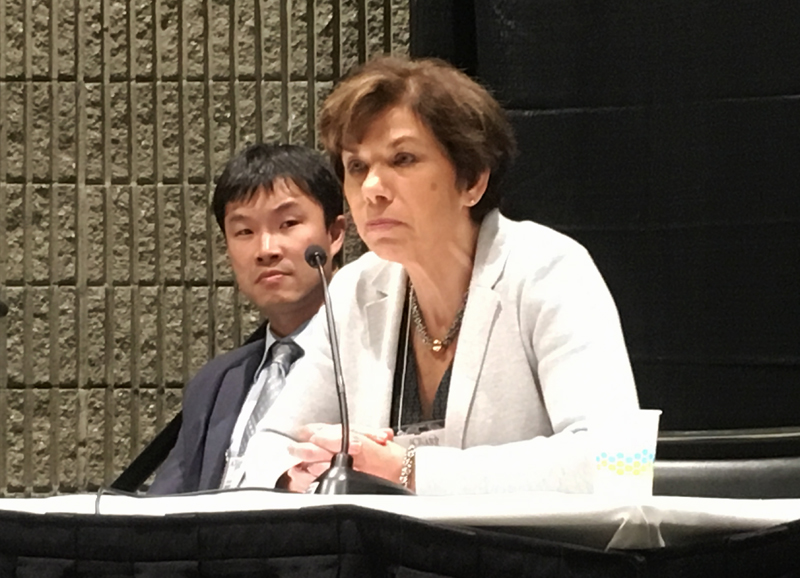Absence of pediatric studies blocking critical biologic DMARDs for JIA

ATLANTA — Lax FDA policies on required pediatric studies for approved biologic DMARDs have exacerbated an already critical lack of approved therapies for juvenile idiopathic arthritis and related conditions, according to a presentation at the 2019 ACR/ARP Annual Meeting.
“Four medications have been approved for polyarticular courses of JIA in the United States, however, there are nine other medications for the treatment of JIA that have never been formally studied — we just use them how we think is the best way,” Hermine Brunner, MD, MSc, director of the Lupus Center at Cincinnati Children’s Hospital Medical Center, said during a press conference. “For two types of JIA, the psoriatic and the enthesitis-related arthritis, there is not a single medication that has ever been studied at the request of the FDA.”
“Why is that?” she added. “It is because juvenile psoriatic arthritis and the juvenile form of spondyloarthritis are on an automatic waiver list from the FDA because, as per the FDA website, there are hardly any patients with juvenile psoriatic arthritis and it would be impractical for the pharmaceutical companies to do such studies. I was incensed by this, as you can imagine, and I conducted a study to document the ongoing need for additional medications that are approved for the treatment of JIA.”

To establish this need, Brunner and colleagues examined patient data among children with JIA from two registries: The national Childhood Arthritis and Rheumatology Research Alliance (CARRA) registry (n = 7,379) supplemented by a cohort of patients at Cincinnati Children’s Hospital (n = 1,599). The researchers examined medication use and disease activity at the most recent patient visit, defining ongoing medication need as active JIA despite sequential use of two or more biologic DMARDs.
Additionally, Brunner and colleagues defined active JIA as either physician-global assessment of JIA activity of three or more; three or more active joints; or a patient global assessment score of three or more. Drug failure was only assessed among patients for which there was complete data.
According to survey results, approximately 52% of patients Cincinnati Children’s Hospital and 45% of patients in CARRA exhibited ongoing active JIA despite treatment with two or more biologics. Although the use of biologic DMARDs was prevalent in both groups — 53% for Cincinnati Children’s and 65% for CARRA — an ongoing drug need was found among 30% of patients at Cincinnati Children’s Hospital and 15% of the CARRA registry.
Additionally, the researchers found that 24% of patients in CARRA registry used drugs that had not been approved for JIA.
“In our population-based registry [at Cincinnati Children’s Hospital], over 35% of the children were treated with medication that had never been formally studied by the FDA for children, but nonetheless were used out of desperation,” Brunner said.
In addition, the researchers found that 17% of the Cincinnati Children’s Hospital cohort exhibited juvenile psoriatic arthritis or enthesitis-related arthritis. Among these patients, “80% were on nonapproved biologic DMARDs,” noted Brunner, which means that “pediatric rheumatologists have to write endless letters to the insurance company to get medications for these children.”
“Using data from a population-based registry at Cincinnati Children’s Hospital and a large national registry from CARRA, we can show there is a large existing medication need,” Brunner said. “We need more medications to be studied by the FDA and there needs to be higher demands to do that well.”– by Robert Stott
Reference:
Brunner H. Abstract #1813. New medications are needed for children with juvenile idiopathic arthritis. Presented at ACR/ARP Annual Meeting, Nov. 8-13, 2019; Atlanta.
Disclosure: Brunner reports receiving research grants from BMS, MedImmune, Novartis and Pfizer Inc; being an employee of CCMHC; receiving consulting fees or other remuneration from AbbVie, AstraZeneca-MedImmune, Bayer, Biocon, BMS, Boehringer-Ingelheim, Janssen, Eli Lilly, Novartis, Pfizer Inc, R-Pharm, and Roche; and is a member of speakers’ bureaus for GSK, Novartis, and Roche.


